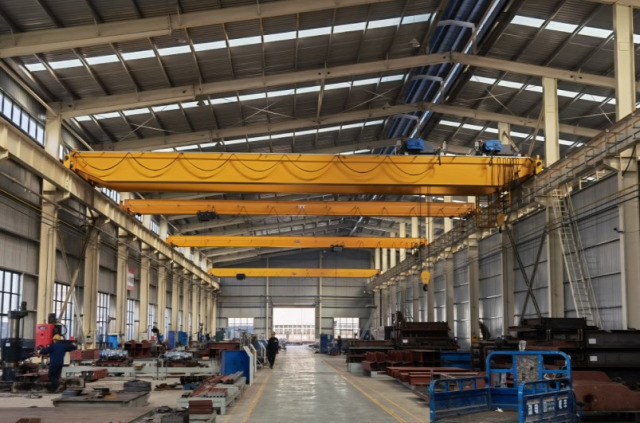A 50-ton overhead crane is a heavy-duty lifting solution widely used in industries such as manufacturing, construction, and logistics. When considering the purchase of a 50-ton overhead crane, understanding the factors that influence its price is crucial. In this article, we will explore the three main factors that affect the price of a 50-ton overhead crane, helping you make an informed decision.

Design and Specifications
The design and specifications of a double girder overhead crane 50 ton significantly impact its price. Various factors within the design contribute to the overall cost. These include:
a) Span and Lift Height: The span refers to the distance between the runway beams, while the lift height is the vertical distance the crane can lift the load. A wider span and greater lift height require additional materials, engineering, and structural considerations, which can increase the cost.
b) Crane Configuration: The configuration of the crane, such as single girder or double girder, affects the price. Double girder cranes are typically more expensive due to their higher load capacity and increased complexity in design and construction.
c) Hoist and Trolley: The type and quality of the hoist and trolley system used in the crane influence the price. Advanced features, such as variable speed controls and precise positioning capabilities, can increase the cost.
d) Control System: The type of control system, whether it's pendant control or radio remote control, impacts the price. Advanced control systems with additional features, such as automation and safety functions, may come at a higher cost.
Manufacturing Materials and Components
The quality of materials and components used in the manufacturing of a 50-ton overhead crane has a direct impact on its price. Higher-quality materials, such as structural steel, are more expensive but offer greater durability, strength, and longevity. The components used, such as motors, brakes, and electrical systems, also contribute to the overall cost. High-quality components may be pricier but provide better performance and reliability, reducing maintenance and downtime costs in the long run.
Additionally, factors like the origin of the materials and the manufacturing standards followed by the crane manufacturer can influence the price. Cranes manufactured in countries with lower labor and material costs may be more affordable, but it's essential to ensure that they meet international safety and quality standards.
Additional Features and Customization
The inclusion of additional features and customization options can affect the price of a 50-ton overhead crane. Depending on your specific requirements, you may need certain features, such as anti-collision systems, overload protection, or specialized lifting attachments. These additional features, along with customization requests, will impact the overall price of the crane. It's important to consider the necessity of these features and balance them with your budget constraints.
Furthermore, installation, commissioning, and after-sales services can influence the overall cost. Some manufacturers offer these services as part of the package, while others may charge separately. Considering the availability of technical support, warranty coverage, and maintenance services is crucial in determining the total cost of ownership.
Conclusion
When evaluating the price of a 50-ton overhead crane, it's essential to consider multiple factors. The design and specifications, including span, lift height, crane configuration, hoist and trolley system, and control system, all contribute to the price. The choice of manufacturing materials and components, as well as their quality, affects both the initial cost and long-term reliability. Finally, additional features, customization options, and associated services should be considered in relation to your specific requirements.
While price is an important consideration, it should not be the sole determining factor. Prioritize safety, performance, and long-term value when selecting a 50-ton overhead crane. Collaborate with reputable manufacturers or suppliers who can provide guidance and ensure that the crane meets your operational needs while offering reliable performance and compliance with industry standards.

